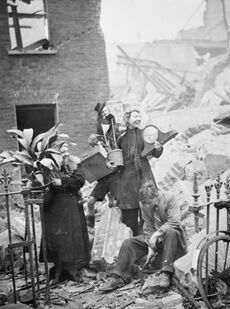قصف لندن
| ||||||||||||||||||||||||||
قصف لندن أو البليتز (إنگليزية: The Blitz)، هي حملة قصف ألمانيا على المملكة المتحدة عامي 1940 و1941، أثناء الحرب العالمية الثانية. استخدم المصطلح لأول مرة من قبل وسائل الإعلام البريطانية ويرجع أصله لكلمة Blitzkrieg، وهي كلمة ألمانيا تعني 'حرب البرق'.[4]
The Germans conducted mass air attacks against industrial targets, towns, and cities, beginning with raids on London towards the end of the Battle of Britain in 1940 (a battle for daylight air superiority between the Luftwaffe and the Royal Air Force over the United Kingdom). By September 1940, the Luftwaffe had lost the Battle of Britain and the German air fleets (Luftflotten) were ordered to attack London, to draw RAF Fighter Command into a battle of annihilation.[5][6] Adolf Hitler and Reichsmarschall Hermann Göring, commander-in-chief of the Luftwaffe, ordered the new policy on 6 September 1940. From 7 September 1940, London was systematically bombed by the Luftwaffe for 56 of the following 57 days and nights.[7][8] Most notable was a large daylight attack against London on 15 September.
The Luftwaffe gradually decreased daylight operations in favour of night attacks to evade attacks by the RAF, and the Blitz became a night bombing campaign after October 1940. The Luftwaffe attacked the main Atlantic seaport of Liverpool in the Liverpool Blitz. The North Sea port of Hull, a convenient and easily found target or secondary target for bombers unable to locate their primary targets, suffered the Hull Blitz. The port cities of Bristol, Cardiff, Portsmouth, Plymouth, Southampton, Swansea, Belfast, and Glasgow were also bombed, as were the industrial centres of Birmingham, Coventry, Manchester and Sheffield. More than 40,000 civilians were killed by Luftwaffe bombing during the war, almost half of them in the capital, where more than a million houses were destroyed or damaged.[1]
In early July 1940, the German High Command began planning Operation Barbarossa, the invasion of the Soviet Union.[9] Bombing failed to demoralise the British into surrender or do much damage to the war economy; eight months of bombing never seriously hampered British war production, which continued to increase.[10][11] The greatest effect was to force the British to disperse the production of aircraft and spare parts.[12] British wartime studies concluded that cities generally took 10 to 15 days to recover when hit severely, but exceptions like Birmingham took three months.[12]
The German air offensive failed because the Luftwaffe High Command (Oberkommando der Luftwaffe, OKL) did not develop a methodical strategy for destroying British war industry. Poor intelligence about British industry and economic efficiency led to OKL concentrating on tactics rather than strategy. The bombing effort was diluted by attacks against several sets of industries instead of constant pressure on the most vital.[12][13]
خلفية
لوفتڤافه والقصف الاستراتيجي
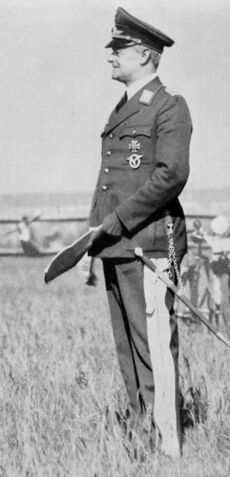
هتلر، گورينگ والقوة الجوية
معركة بريطانيا
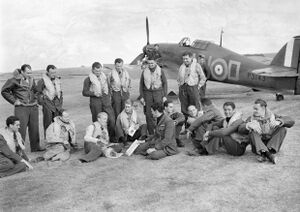
تغيير الاستراتيجية
الدفاع المدني
التجهيزات ومخاوف ما قبل الحرب

الملاجئ الجماعية

"روح البليتز"
التعبئة المدنية
الدفاع الليلي للقوات الجوية البريطانية قبل الحرب
التكنولوجيا
أجهزة الملاحة الليلية الألمانية
التدابير البريطانية المضادة
المرحلة الأولى
Loge and Seeschlange

تحسينات في الدفاعات البريطانية
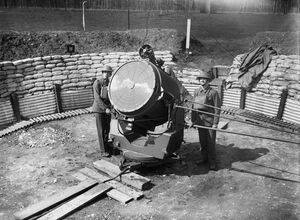
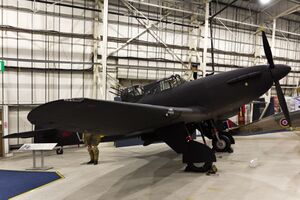
المرحلة الثانية
الهجمات الليلية

القصف الاستراتيجي أو "المرعب"

الهجمات الأخيرة
الموانئ البريطانية
مقاتلو القوات الجوية البريطانية الليليين
التبعات
خسائر اللوفتڤافه
فعالية القصف
| الشهر | النتئجة |
|---|---|
| 1940 | |
| سبتمبر | 217 |
| أكتوبر | 245 |
| نوفمبر | 242 |
| ديسمبر | 239 |
| 1941 | |
| يناير | 244 |
| فبراير | 266 |
| مارس | 303 |
| أبريل | 284 |
| مايو | 319 |
تقييم القوات الجوية البريطانية
الصورة الشعبية والپروپاگندا
التسجيلات الصوتية الأرشيفية
أنقاض موقع القنابل
جداول
إحصائيات غارة القصف
| المدينة | طن | الغارات |
|---|---|---|
| لندن | 18,291 | 71 |
| Liverpool/ Merseyside |
1,957 | 8 |
| Birmingham | 1,852 | 8 |
| Glasgow/ Clydeside |
1,329 | 5 |
| Plymouth | 1,228 | 8 |
| Bristol | 919 | 6 |
| Exeter | 75 | 19 |
| Coventry | 818 | 2 |
| Portsmouth | 687 | 3 |
| Southampton | 647 | 4 |
| Hull | 593 | 3 |
| Manchester | 578 | 3 |
| Belfast | 440 | 2 |
| Sheffield | 355 | 2 |
| Sunderland | 155 | 1 |
| Nottingham | 137 | 1 |
| Cardiff | 115 | 1 |
الطلعات الجوية
| الشهر/السنة | الطلعات النهارية (الخسائر) | الطلعات الليلية (الخسائر) | طلعات Luftflotte 2 | طلعات Luftflotte 3 | الهجمات الرئيسية | الهجمات الثقيلة |
|---|---|---|---|---|---|---|
| أكتوبر 1940 | 2,300 (79) | 5,900 (23) | 2,400 | 3,500 | 25 | 4 |
| نوفمبر 1940 | 925 (65) | 6,125 (48) | 1,600 | 4,525 | 23 | 2 |
| ديسمبر 1940 | 650 (24) | 3,450 (44) | 700 | 2,750 | 11 | 5 |
| يناير 1941 | 675 (7) | 2,050 (22) | 450 | 1,600 | 7 | 6 |
| فبراير 1941 | 500 (9) | 1,450 (18) | 475 | 975 | – | 2 |
| مارس 1941 | 800 (8) | 4,275 (46) | 1,625 | 2,650 | 12 | 3 |
| أبريل 1941 | 800 (9) | 5,250 (58) | 1,500 | 3,750 | 16 | 5 |
| مايو 1941 | 200 (3) | 3,800 (55) | 1,300 | 2,500 | 11 | 3 |
انظر أيضاً
الهوامش
- ^ Ministry of Supply index of output of warlike stores; baseline was the average output September–December 1939 and set at 100.[14]
المصادر
- ^ أ ب Richards 1954, p. 217.
- ^ أ ب خطأ استشهاد: وسم
<ref>غير صحيح؛ لا نص تم توفيره للمراجع المسماةFoot and Dear 2005, p. 109. - ^ خطأ استشهاد: وسم
<ref>غير صحيح؛ لا نص تم توفيره للمراجع المسماةHooton 2010, p. 89. - ^ "WW2: Eight months of Blitz terror". BBC.
- ^ Price 1990, p. 12.
- ^ Ray 2009, pp. 104–05.
- ^ Stansky 2007, p. 28.
- ^ "The Blitz: The Bombing of Britain in WWII". WW2 Explained (in الإنجليزية البريطانية). 2021-04-12. Retrieved 2021-10-21.
- ^ Bungay, Stephen (2000). The Most Dangerous Enemy: A History of the Battle of Britain. London: Aurum Press. ISBN 1-85410-721-6. (hardcover), 2002, ISBN 1-85410-801-8 (paperback). pp. 112–13
- ^ Cooper 1981, p. 174.
- ^ Cooper 1981, p. 173.
- ^ أ ب ت Hooton 1997, p. 38.
- ^ Overy 1980, pp. 34, 36.
- ^ أ ب Postan 1952, p. 174.
- ^ Ray, 1996, p. 264
- ^ خطأ استشهاد: وسم
<ref>غير صحيح؛ لا نص تم توفيره للمراجع المسماةHooton
المراجع
- Addison, Paul and Jeremy Crang. The Burning Blue: A New History of the Battle of Britain. London: Pimlico, 2000. ISBN 978-0-7126-6475-2
- Bungay, Stephen. The Most Dangerous Enemy: A History of the Battle of Britain. London: Aurum Press, 2000. ISBN 978-1-85410-801-2
- Calder, Angus. The Myth of the Blitz. Pimlico, London, 2003. ISBN 978-0-7126-9820-7
- Coates, Tim (1999) [1945]. Tragedy at Bethnal Green: Report on an Inquiry Into the Accident at Bethnal Green Tube Station Shelter. London: London Stationery Office. ISBN 978-0-11-702404-5.
- Collier, Richard. Eagle Day: The Battle of Britain, 6 August – 15 September 1940. J. M. Dent. 1980. ISBN 978-0-460-04370-0
- Cooper, Matthew. The German Air Force 1933–1945: An Anatomy of Failure. New York: Jane's. 1981. ISBN 978-0-531-03733-1
- Corum, James. The Luftwaffe: Creating the Operational Air War, 1918–1940. Kansas University Press. 1997. ISBN 978-0-7006-0836-2
- de Zeng, Henry L., Doug G. Stankey and Eddie J. Creek. Bomber Units of the Luftwaffe 1933–1945: A Reference Source, Volume 1. Hersham, Surrey, UK: Ian Allan, 2007. ISBN 978-1-85780-279-5
- de Zeng, Henry L., Doug G. Stankey and Eddie J. Creek. Bomber Units of the Luftwaffe 1933–1945: A Reference Source, Volume 2. Hersham, Surrey, UK: Ian Allan, 2007. ISBN 978-1-903223-87-1
- Faber, Harold. Luftwaffe: An analysis by former Luftwaffe Generals. Sidwick and Jackson, London, 1977. ISBN 978-0-283-98516-4
- Field, Geoffrey. [1] Nights Underground in Darkest London: The Blitz, 1940–1941, in International Labour and Working-Class History. Issue No. 62, Class and Catastrophe: September 11 and Other Working-Class Disasters. (Autumn, 2002), pp. 11–49. OCLC 437133095
- Gaskin, M.J. Blitz: The Story of the 29th December 1940. Faber and Faber, London. 2006. ISBN 978-0-571-21795-3
- Goss, Chris. The Luftwaffe Bombers' Battle of Britain. Crecy. 2000, ISBN 978-0-947554-82-8
- Hall, Cargill. Case Studies in Strategic Bombardment. Air Force History and Museums Program, 1998. ISBN 978-0-16-049781-0.
- Hill, Maureen. The Blitz. Marks and Spencer, London, 2002. ISBN 978-1-84273-750-7
- Hinsley, F. H. (1979). British Intelligence in the Second World War. History of the Second World War. Vol. I. London: HMSO. ISBN 978-0-11-630933-4.
- Holland, James. The Battle of Britain: Five Months that Changed History. Bantam Press, London, 2007. ISBN 978-0-593-05913-5
- Hooton, E. R. (1997). Eagle in Flames: The Fall of the Luftwaffe. Arms & Armour Press. ISBN 978-1-85409-343-1.
- —— (2010). The Luftwaffe: A Study in Air Power, 1933–1945. Classic Publications. ISBN 978-1-906537-18-0
- Hough, Richard and Denis Richards. The Battle of Britain. Pen & Sword. 2007. ISBN 978-1-84415-657-3
- Ingersoll, Ralph (1940). Report on England, November 1940. New York: Simon and Schuster. OCLC 493444830.
- Isby, David. The Luftwaffe and the War at Sea, 1939–1945. Chatham, London, 2005. ISBN 978-1-86176-256-6
- James, T. C. G. and Cox, Sebastian. The Battle of Britain. Frank Cass, London. 2000. ISBN 978-0-7146-8149-8
- Knickerbocker, H. R. (1941). Is Tomorrow Hitler's? 200 Questions On the Battle of Mankind. Reynal & Hitchcock. ISBN 978-1-4179-9277-5. OCLC 1246282.
- Levine, Joshua. Forgotten Voices of the Blitz and the Battle for Britain, Ebury Press, 2006. ISBN 978-0-09-191003-7
- Mackay, Robert (2002). Half the Battle: Civilian Morale in Britain during the Second World War. Manchester: Manchester University Press. ISBN 978-1-84779-020-0.
- Mackay, Ron. Heinkel He 111 (Crowood Aviation Series). Marlborough: Crowood Press, 2003. ISBN 978-1-86126-576-0
- Montgomery-Hyde, H. British Air Policy Between the Wars. Heinemann, London, 1976. ISBN 978-0-434-47983-2
- Murray, Williamson (1983). Strategy for Defeat: the Luftwaffe 1933–1945. Air University Press. ISBN 978-1-4289-9360-0
- Neitzel, Sönke. Kriegsmarine and Luftwaffe Co-operation in the War against Britain. War in History Journal. 2003, Volume 10: pp. 448–63. ISSN 0968-3445
- Nicol, Patricia (2010). Sucking Eggs. London: Vintage Books. ISBN 978-0-09-952112-9.
- Overy, Richard. "Hitler and Air Strategy". Journal of Contemporary History 15 (3): 405–21. July 1980 ISSN 0022-0094
- Overy, Richard. The Air War, 1939–1945. Potomac Books, Washington, 1980. ISBN 978-1-57488-716-7
- Price, Alfred. Battle of Britain Day: 15 September 1940. Greenhill books. London. 1990. ISBN 978-1-85367-375-7
- Price, Alfred. Blitz on Britain 1939–45, Sutton, 2000. ISBN 978-0-7509-2356-9
- Price, Alfred. Instruments of Darkness: The History of Electronic Warfare, 1939–1945. Greenhill, London, 1977. ISBN 978-1-85367-616-1
- Postan, M. M. (1952). British War Production. History of the Second World War: United Kingdom Civil Series. London: HMSO. OCLC 459583161.
- Raeder, Erich. Erich Raeder, Grand Admiral. New York: Da Capo Press. United States Naval Institute, 2001. ISBN 978-0-306-80962-0
- Ramsey, Winston (1988). The Blitz Then and Now, Volume 2, After the Battle; First Editions edition. ISBN 978-0-90091-354-9
- Ray, John. The Battle of Britain: Dowding and the First Victory, 1940. London: Cassel Military Paperbacks, 2009. ISBN 978-1-4072-2131-1
- Ray, John. The Night Blitz: 1940–1941. Cassell Military, London. 1996. ISBN 978-0-304-35676-8
- Richards, Denis (1974) [1953]. Royal Air Force 1939–1945: The Fight at Odds. Vol. I (paperback ed.). London: HMSO. ISBN 978-0-11-771592-9. Retrieved 22 December 2015.
- Roberts, Andrew. Chapter 3: Last Hope Island in The Storm of War: A New History of the Second World War. ISBN 978-0-06-122859-9
- Sansom, William. The Blitz: Westminster at war. Oxford University Press, 1990. ISBN 978-0-57-127271-6
- Shores, Christopher. Duel for the Sky: Ten Crucial Battles of World War II. Grub Street, London 1985. ISBN 978-0-7137-1601-6
- Stansky, Peter. The First Day of the Blitz. Yale University Press, 2007. ISBN 978-0-300-12556-6
- Summerfield, Penny and Peniston-Bird, Corina. Contesting Home Defence: Men, Women and the Home Guard in the Second World War. Manchester University Press, Manchester, 2007. ISBN 978-0-7190-6202-5
- Taylor, John W.R. Boulton Paul Defiant: Combat Aircraft of the World from 1909 to the present. New York: Putnam, 1969. p. 326. ISBN 978-0-425-03633-4
- The Rise and Fall of the German Air Force. Public Record Office War Histories. Air 41/10 (repr. HMSO ed.). Richmond, Surrey: Air Ministry (A. C. A. S. [I]). 2001 [1948]. ISBN 978-1-903365-30-4.
{{cite book}}: CS1 maint: others (link) - Titmuss, R. M. (1950). Problems of Social Policy. History of the Second World War, United Kingdom Civil Series. HMSO. OCLC 1223588. Retrieved 22 December 2015.
- White, Ian. The History of Air Intercept Radar & the British Night fighter 1935–1939. Pen & Sword, Barnsley, 2007, ISBN 978-1-84415-532-3
- Tooze, Adam (2006). The Wages of Destruction: The Making and Breaking of the Nazi Economy. London: Allen Lane. ISBN 978-0-7139-9566-4.
- Way, T. (2015). The Wartime Garden: Digging for Victory. Oxford: Shire. ISBN 978-1-78442-008-6.
- Ziegler, Philip (2002). London at War, 1939-1945. London: Pimlico. ISBN 978-0712698719.
قراءات إضافية
- Allwright, Lucy (2011). The War on London: Defending the City From the War in the Air: 1932–1942. wrap.warwick.ac.uk (PhD). Coventry: University of Warwick. OCLC 921053410. قالب:EThOS. Retrieved 2 June 2017. قالب:Free access
- Flinn, Catherine. Rebuilding Britain's Blitzed Cities: Hopeful Dreams, Stark Realities (Bloomsbury Academic, 2019) online review
وصلات خارجية
- The Blitz Original reports and pictures from The Times
- Parliament & The Blitz – UK Parliament Living Heritage
- "London Blitz 1940: the first day's bomb attacks listed in full". The Guardian. 6 September 2010.
- Archive recordings from The Blitz, 1940–41 (audiobook)
- The Blitz: Sorting the Myth from the Reality, BBC History
- Exploring 20th century London – The Blitz Objects and photographs from the collections of the Museum of London, London Transport Museum, Jewish Museum and Museum of Croydon
- Liverpool Blitz Experience 24 hours in a city under fire in the Blitz
- First Hand Accounts of the Blitz StoryVault Oral History Project
- Forgotten Voices of the Blitz and the Battle for Britain
- War and peace and the price of cat fish World War II diary of resident in south-west London.
- Oral history interview with Barry Fulford, recalling his childhood during the Blitz from the Veteran's History Project at Central Connecticut State University
- Interactive bombing map of London
- Interactive bombing map of Buckinghamshire
- Childhood Wartime memories, from "Memoro – The Bank of Memories" (Joy Irvin)
- [2] The Blitz Companion – open access book considering the Blitz in context of aerial warfare since 1911
- CS1 الإنجليزية البريطانية-language sources (en-gb)
- Short description is different from Wikidata
- Articles containing إنگليزية-language text
- Pages using Lang-xx templates
- Articles containing ألمانية-language text
- Articles with hatnote templates targeting a nonexistent page
- CS1 maint: others
- قصف لندن
- معارك بريطانيا
- 1940 في لندن
- 1941 في لندن
- 1940 في التاريخ العسكري
- 1941 في التاريخ العسكري
- 1940 في المملكة المتحدة
- 1941 في المملكة المتحدة
- معارك وتحركات عسكرية في لندن
- غارات جوية
- الجبهة الداخلية للمملكة المتحدة أثناء الحرب العالمية الثانية













